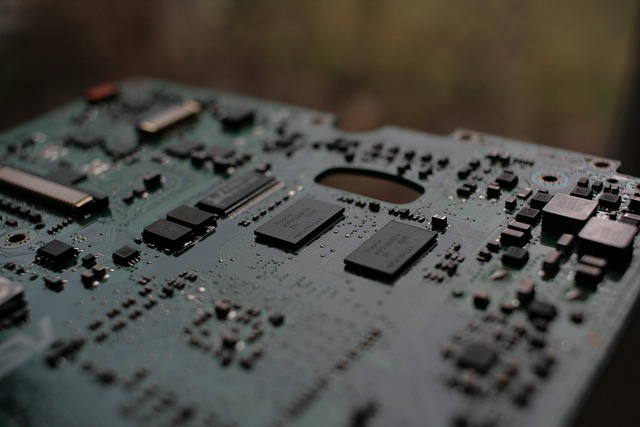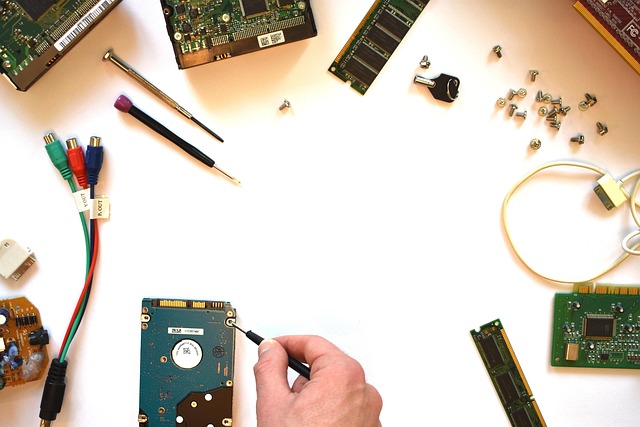Concrete wall cracks require immediate attention, with root causes including settlement, thermal expansion/contraction, and poor construction. Assess damage by inspecting length, width, depth, and pattern, then categorize cracks for tailored repair methods. Gather essential materials like epoxy fillers, putty knives, and cleaning brushes; consider an injection pump for deeper cracks. For small cracks, clean, patch with epoxy or concrete compound, and seal; larger cracks demand structural repairs involving reinforcement and injection techniques. Regular inspection, maintenance, and sealing protect against future damage, emphasizing the importance of proper crack repair for concrete wall longevity.
Concrete walls, despite their durability, can develop cracks over time due to various factors. This comprehensive guide delves into the world of crack repair, offering insights on understanding crack causes and types, assessing damage, and choosing the right materials. From small repairs to structural enhancements, we provide a step-by-step approach. Learn best practices to ensure longevity and avoid common mistakes. Additionally, discover maintenance tips to prevent future cracking, empowering you with the knowledge to keep your concrete walls in top condition.
Understanding Concrete Wall Cracks: Causes and Types

Concrete wall cracks can be both aesthetically displeasing and a potential structural issue, necessitating prompt action for crack repair. Understanding the causes and types of these cracks is the first step in addressing them effectively. Common causes include settlement, expansion or contraction due to temperature changes, and structural flaws from poor initial construction. Settlement cracks often appear as vertical lines and result from the soil beneath the concrete shrinking or shifting. Temperature-induced cracks, usually diagonal or horizontal, occur when concrete expands and contracts with heat fluctuations. These can be further categorized into two types: hairline cracks, which are typically shallow and fine, and larger, more noticeable cracks that can compromise the wall’s integrity. Identifying the specific type of crack is crucial in selecting the appropriate crack repair method.
Assess the Extent of Damage: Inspecting the Cracks

Before beginning any concrete wall repair, it’s crucial to assess the extent of damage. Start by thoroughly inspecting the cracks – their length, width, depth, and pattern. Cracks can range from hairline fractures to large, structural breaches. Note that while some cracks are merely cosmetic, others could indicate more serious issues like settlement or moisture intrusion.
Focus on both vertical and horizontal cracks, as well as any signs of bulging, shifting, or uneven surfaces. Taking detailed notes will help guide your crack repair process, ensuring you use the appropriate techniques and materials for each type and severity of damage.
Materials and Tools Required for Crack Repair

To tackle crack repair on a concrete wall, you’ll need a few key materials and tools. The primary components include an epoxy or polyurethane-based crack filler designed specifically for concrete structures. These fillers come in a two-part formula that must be mixed according to the manufacturer’s instructions before application. A putty knife is essential for applying the filler; choose one with a flat edge for even distribution. Additionally, a brush can help clean any debris from the crack before filling. For deeper cracks, an injection pump and fiber mesh may be required to enhance structural integrity and prevent future damage. Always ensure you have adequate ventilation during the repair process due to potentially harmful fumes.
Step-by-Step Guide to Repairing Small Cracks

Repairing small cracks in concrete walls is a straightforward process that can significantly improve the aesthetics and structural integrity of your space. Here’s a step-by-step guide to help you get started. Begin by cleaning the crack using a wire brush or power washer to remove any loose debris, dust, or paint. This ensures proper adhesion for the repair material. Next, apply a thin layer of epoxy or concrete patching compound along the length of the crack using a putty knife. Make sure the product is suitable for exterior use and has good flexibility to accommodate future minor movements in the concrete.
Once the crack is filled, lightly sand the surface to create a slightly textured finish that will better accept additional coatings. Allow the initial repair material to cure fully according to the manufacturer’s instructions. After curing, apply one or two coats of high-quality exterior concrete sealer to protect the repaired area from moisture and environmental damage. Regular inspection and prompt crack repair are key to maintaining the longevity of your concrete walls.
Techniques for Larger Cracks and Structural Repairs

For larger cracks, a more extensive approach is required, often involving structural repairs. This process typically starts with assessing the damage to determine if the crack is structural or cosmetic. If it’s structural, addressing the root cause is crucial, such as reinforcing steel bars or adding new concrete to strengthen the wall. Professionals use techniques like carbon fiber reinforcement or epoxy injection to fill and stabilize cracks, ensuring stability and preventing further damage.
These repairs require precision and expertise to match the existing concrete’s composition and finish seamlessly. Crack repair methods for larger gaps might involve creating a mold or formwork to ensure an accurate, smooth finish. This meticulous process not only enhances aesthetics but also guarantees the integrity of the wall, making it safer and more durable in the long run.
Best Practices for Ensuring Longevity of Repair Work

When it comes to concrete wall repair, implementing best practices is key to ensuring longevity and durability of the repair work. One of the most important aspects is proper crack repair. Cracks in concrete walls can worsen over time if left unaddressed, leading to structural instability. Before repairing, assess the extent of damage and weather conditions; cracks should be cleaned, free from debris, and dry to ensure effective bonding with repair materials.
Using high-quality products specifically designed for concrete restoration is crucial. Fill the crack with a suitable epoxy or polyurethane injection mousse, which will fill the void and provide long-lasting strength. After application, smoothly finish the surface for an even blend with the existing wall. Regular maintenance, including sealing and cleaning, can extend the life of repairs, protecting against moisture intrusion and future damage.
Common Mistakes to Avoid During Concrete Wall Repair

Concrete wall repair can be a complex process, and many homeowners make costly mistakes during crack repair that could have been avoided with proper knowledge. One of the most common errors is trying to fix cracks without first addressing the root cause. Concrete walls may develop cracks due to various issues like structural problems, settlement, or temperature changes, so identifying and rectifying these underlying factors is crucial for long-lasting repairs. Ignoring this step often leads to repeated cracking and further damage.
Another mistake is using the wrong repair techniques or materials. Using an improper sealant or filler can cause adhesion issues and compromise the structural integrity of the wall. It’s essential to choose products designed specifically for concrete crack repair, ensuring they meet industry standards and are suitable for your climate conditions. Additionally, skimping on labor or attempting DIY repairs without proper training can result in subpar work, leading to future complications and additional expenses.
Maintenance Tips: Preventing Future Cracking

Regular maintenance is key in preventing future concrete wall cracking. One of the most effective ways to avoid cracks is to ensure proper drainage around the structure. Over time, water pressure can cause concrete to fracture, so directing rainwater away from your walls and foundation is essential. This includes installing proper gutters and downspouts, and ensuring they are cleared of debris regularly. Additionally, frequent inspections can help catch small cracks early on, preventing them from expanding and becoming more costly to repair.
Sealants and coatings designed for concrete also play a crucial role in protection against cracking. Applying these products creates a protective barrier that shields the concrete from moisture, extreme temperatures, and UV rays—all of which contribute to degradation over time. By incorporating these maintenance practices into your routine upkeep, you can significantly extend the lifespan of your concrete walls and avoid costly crack repair down the line.
